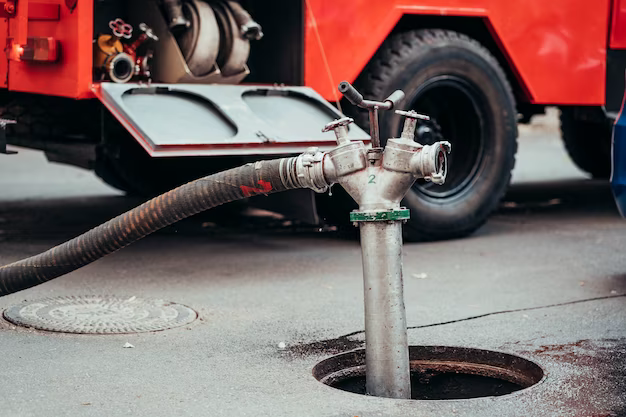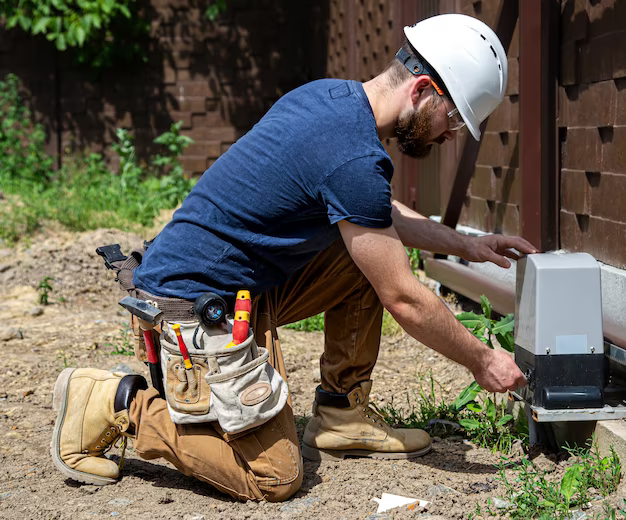Why is my septic pump constantly running?
What is a Septic Pump?
Septic tanks are an essential component in any property that operates without access to a municipal sewage system. They work by collecting and treating waste from toilets, sinks, and other plumbing outlets before releasing it into the surrounding environment. However, all the wastewater doesn’t just magically disappear on its own. It moves thanks to a small but vital part – the septic pump.
A septic pump is a device that transfers the wastewater from a septic tank to a designated leach field or other disposal area. It’s typically a submersible pump that sits in the lowest, most remote section of the septic tank. A pipe connecting the pump to the discharge port in the tank and an electrical cord that runs from the pump to a nearby outlet complete the septic pump system.

When the water level in the tank reaches a certain height, the septic pump starts running. It pumps out the wastewater,sending it through the discharge pipe to the leach field or disposal area. Once the water level has dropped below the pump’s operation level, the pump stops running until the water level rises again to the pump reactivation level.
Septic pumps come in different models and sizes, depending on the property’s needs. It’s essential to choose the right model to handle the volume of wastewater produced by the property. An undersized septic pump can lead to major problems, including clogged pipes and backups, while a larger pump than necessary can cause the motor to burn out from overuse.
In conclusion, the septic pump is a vital part of the septic tank system that helps move wastewater from the septic tank to the designated disposal area. Proper selection, installation, and maintenance of a septic pump will ensure the safe and efficient treatment of all the wastewater generated by a property.
Why Might My Septic Pump Be Constantly Running?
If you have a septic system on your property, then you know that it’s an essential component for dealing with wastewater safely. However, if your septic pump is constantly running, it could be a sign of a more significant issue. Here are some reasons why your septic pump might be running all the time:
1. High Water Table – If your property has a high water table, it means that the ground is saturated with water, which can lead to excess water going into your septic tank. When that happens, your septic pump will continually run to keep up with the influx of water.
2. Faulty Float Switch – A float switch is a device that triggers your septic pump to turn on and off depending on the water level in your septic tank. If the float switch becomes jammed or broken, it can cause your septic pump to run continuously, draining your tank even when it’s not necessary.
3. Undersized Pump – If your septic pump isn’t big enough to handle the amount of wastewater your property produces, it might be running constantly to keep up with the demand. This can cause premature wear and tear on your pump, which could lead to costly repairs down the road.
4. Faulty Check Valve – A check valve is a device that prevents wastewater from flowing back into your septic tank after it’s been pumped out. If the check valve becomes damaged or faulty, it can cause your septic pump to continually run, as it tries to pump out the same water repeatedly.
5. Excess Moisture – Heavy rainfall or other excess moisture can cause a large amount of water to enter your septic tank, which can cause your septic pump to run constantly. This can also be a sign of a drainage issue on your property.
In conclusion, if you notice that your septic pump is running all the time, it’s important to take swift action. You’ll want to contact a professional plumber or septic pump expert to come and assess the problem. With their expertise, they can identify the cause of the issue and recommend the best course of action to keep your septic system functioning properly. Remember, proper maintenance and care can help to prevent costly repairs and potential hazards to your health and home.

Causes of Constant Running
Septic pumps are an essential part of any septic system. They work by pumping wastewater from your home into a septic tank, where it is then broken down by bacteria. However, if you notice that your septic pump is running constantly, it could indicate a problem with your system. Here are some of the most common causes of constant running in septics pumps:
1. High Water Table
A high water table means that the ground is saturated with water, which can cause excess water to enter the septic tank. When this occurs, your septic pump will constantly run as it tries to keep up with the influx of water. This can cause your septic system to become overworked and may even lead to septic system failure.
2. Faulty Float Switch
A float switch is a device that triggers your septic pump to turn on and off depending on the water level in your septic tank. If the float switch becomes jammed or broken, it can cause your septic pump to continually run, draining your tank even when it’s not necessary. This can lead to additional wear and tear on your pump, resulting in costly repairs down the road.
3. Undersized Pump
If your septic pump is not big enough to handle the amount of wastewater your property produces, it may run constantly to keep up with the demand. This can also cause premature wear and tear on your pump, leading to costly repairs in the future.
4. Faulty Check Valve
A check valve is a device that prevents wastewater from flowing back into your septic tank after it has been pumped out. If this device becomes damaged or faulty, it can cause your septic pump to continually run as it tries to pump out the same water repeatedly. This can lead to premature wear and tear on your pump and may result in costly repairs.
5. Excess Moisture
Heavy rainfall or other excess moisture can cause a large amount of water to enter your septic tank, causing your septic pump to run constantly. This can also be a sign of a drainage issue on your property that requires attention.
In summary, if you notice that your septic pump is constantly running, it’s important to identify the cause of the problem in order to prevent any further damage to your system. Consulting with an experienced plumber or septic system technician can help you diagnose the issue and prevent any costly repairs or system failure down the road.
Float Switch Stuck in the On Position
One common reason for septic pump failure is a float switch that becomes stuck in the on position. A float switch is a device that triggers the septic pump to turn on or off depending on the water level in the tank. When the water rises to a certain level, the float switch activates the pump, which then removes the wastewater from the tank.
However, if the float switch gets stuck in the on position, it can cause the septic pump to run continuously, even when the tank is not full. This results in excess wear and tear on the pump, which can lead to premature failure.
There can be several reasons why a float switch becomes stuck in the on position. It may be due to a mechanical issue,such as the float getting tangled or jammed. Alternatively, it may be an electrical problem, such as a malfunctioning switch or an issue with the wiring.

If you suspect that your float switch is stuck in the on position, it is crucial to address the issue promptly. Ignoring the problem can lead to costly repairs down the road and may even result in septic system failure.
In conclusion, a float switch stuck in the on position is a common cause of septic pump failure. If you suspect this issue, it is crucial to address it promptly to avoid costly repairs and potential septic system failure. Consulting a professional plumber or septic service provider can help to diagnose and fix the problem, ensuring the proper functioning of your septic system.
Meet Lila Robinson, an expert in the world of plumbing with a talent for delivering valuable insights and captivating articles on an array of plumbing topics. With years of experience handling complicated plumbing issues, Lila has become a go-to resource for homeowners and businesses alike.
Packing vast knowledge in plumbing tools and science, Lila creates a sense of community on her blog and social media accounts, engaging with readers from all walks of life. Her writing style is authentic, unique, and engaging, and she has an exceptional ability to break complex concepts into understandable ideas.
If you have encountered a plumbing issue, chances are Lila Robinson has conquered it. Her articles uncover the underlying problems behind some of the most unexpected plumbing problems, from tankless water heater error codes to drain snakes in vents.
Whether you’re a beginner or an experienced plumber, Lila Robinson’s blog has something for you. Follow her social media accounts to keep up-to-date with the latest posts and join the conversation.